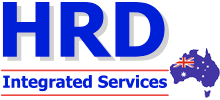Things to know about The HRD enrolment process
LLN entry requirements
All accredited courses delivered by HRD Integrated Services have minimum language, literacy and numeracy (LLN) requirements.
Before finalising your enrolment HRD may ask you to participate in an assessment to check that the LLN skills you have will allow you to cope with the learning level of your chosen course.
If you need LLN support HRD will discuss with you (and your employer, if appropriate) how we can help you.
You can explore examples of the different LLN levels required for HRD’s main course offering.
Prerequisites
No matter what course you’re enrolling in, you need to confirm that you’re able to meet the prerequisites for the course to ensure that you’re eligible to participate or to receive your award. You must hold the necessary prerequisites for HRD to issue a qualification or statement of attainment for accredited training.
Many rail signalling courses require that participants hold an Australian unrestricted electrical licence and/or that you have access to essential technical rail infrastructure and equipment.
Before enrolling or contacting HRD for prerequisite information and eligibility details, first check the relevant course information brochure or course information page.
To participate in most courses offered by HRD Integrated Services you’ll need to be able to read and write to a level that allows you to communicate effectively, sometimes to convey technical or safety-critical information, or to follow a set procedure.
Enrolling
Different HRD courses may have different requirements or prerequisites.
Rail-related training
Some rail–specific courses or qualifications have particular documents that must be presented at or before enrolment.
To ensure that all necessary document and rail track safety or WHS/OHS requirements are met, when joining HRD Integrated Services for training everyone MUST bring the following to enrolment:
- proof of identity – either a current driver’s licence or a proof of identity card or other form of photo identity AND/OR your Rail Industry Worker card (if required)
- evidence of current Train Track Safety Awareness (any of TLIF2080/A/B/C)
- evidence of current Level 1 First Aid (must fall within 3 year lifespan plus CPR that is not more than 12 months old).
At enrolment a HRD staff member may also take your photograph for inclusion in your personal file.
General training courses
Some HRD training doesn’t have rail–specific document requirements. However, you’ll still need to provide proof of identity for all other training courses.
Qualified electricians
If you’re a qualified ‘A’ or ‘E’ class electrician (or have the equivalent Australian unrestricted electrical licence) enrolling in either the Certificate IV in Electrical–Rail Signalling or in the Certificate IV core specialisation units (Rail Signalling Control and Wiring Systems Concepts – the ‘wiring units’), you’ll also need to bring your Certificate III in Electrotechnology Electrician (or equivalent) or your trade qualification (or certified copies) and/or your registered electrical contractor’s licence.
Detailed information for trade applicants can be found on the RPL page, ‘Trade qualifications and RPL’.
High Voltage training
If enrolling in a HV course (for example, HVST, HVSO, HVSR), you’ll need:
- current Category 3 medical certification (for HV operators)
- evidence of HV certification as appropriate.
And for all courses
When making a course enquiry, ask HRD staff if there are any additional evidence requirements.
Course induction
Once you’ve completed an enrolment form, and before training commences, you’ll be inducted into HRD policies and procedures.
While the induction information for all courses is similar, there are some specifics that are covered for a certificate course or an accredited course that don’t apply to non-accredited or industry–specific short courses.
Note: the HRD induction process assumes learners have received a workplace induction to industrial relations and employee representatives (trade unions); and to regulatory bodies such as WorkSafe Victoria and Energy Safe Victoria (REC registration).
Funded training
HRD does not generally provide funded pathways for the courses it offers. However, in the event that funding is offered, there may be additional enrolment, supervision/workplace visits and reporting requirements from the relevant state body that oversees government funded courses (in Victoria this is the Department of Education and Early Childhood Development).
Any funding requirements will be discussed with you during enrolment and induction.
